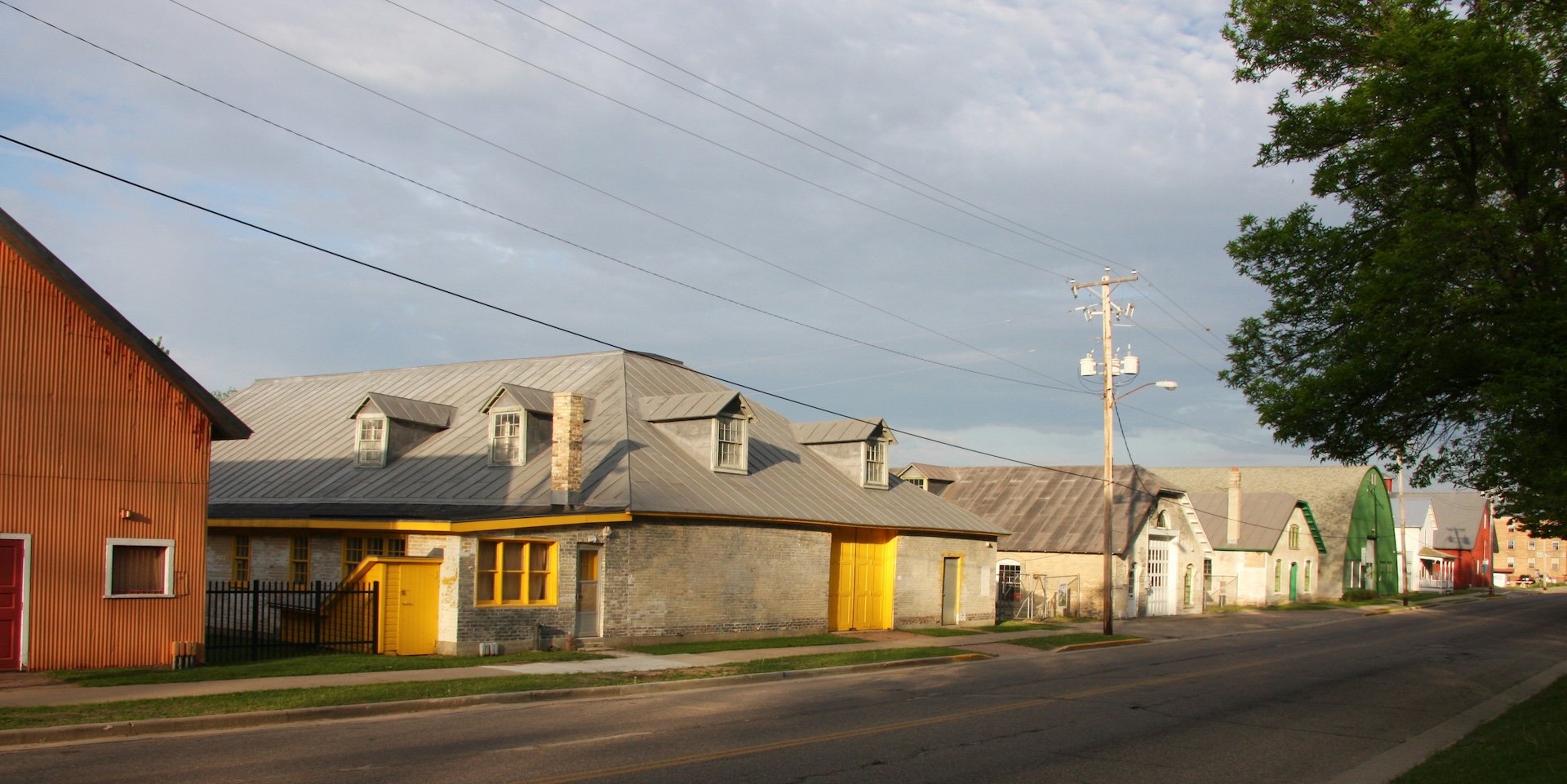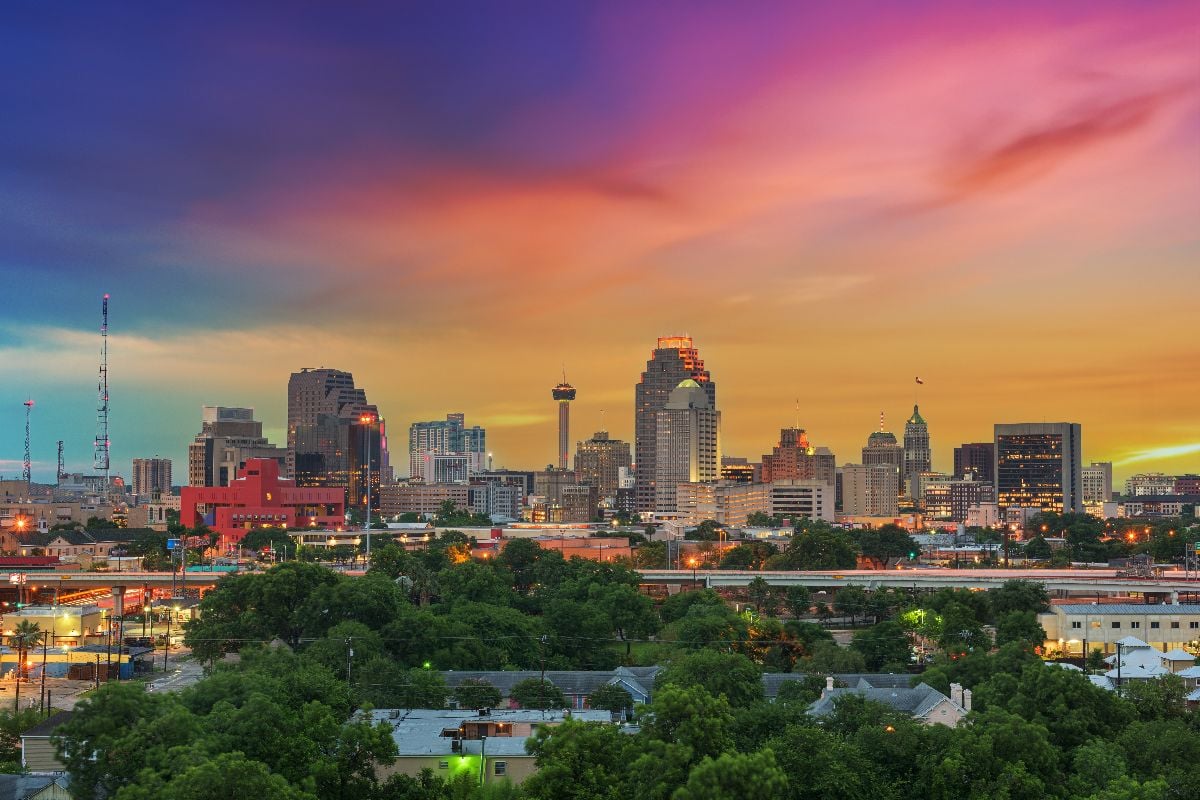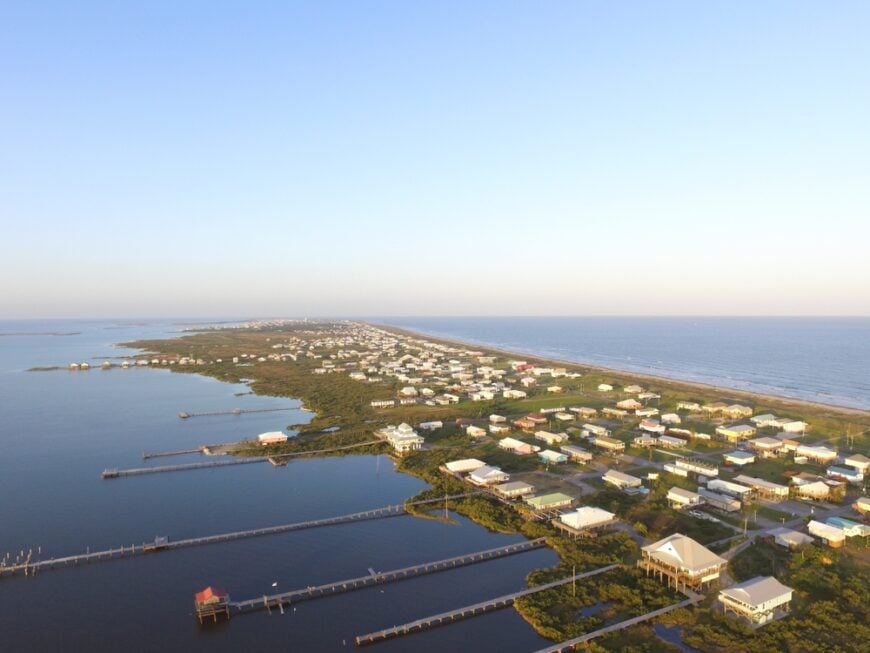
I’ve spent countless weekends wandering the watery backroads of South Louisiana, and every trip reminds me that bayou culture isn’t confined to a single parish or two.
It’s a patchwork of small towns where French melodies slip out of dance-halls, cypress knees rise from coffee-colored water, and somebody’s always ready to share a plate of something spicy.
The 17 communities below each keep a slightly different flame of that culture alive—some through music, others through food, and still others through festivals you won’t find anywhere else on earth.
I’ve ordered them as a countdown so you can feel the anticipation build, the way I do when I leave the interstate and see my first moss-draped oak.
Whether you’re planning a long road trip or just looking for a day escape, these towns will show you the many faces of life along the bayou. Grab a map, crack the windows for that unmistakable marsh smell, and follow me south.
17. Breaux Bridge: Experience Cajun Culture in the Crawfish Capital
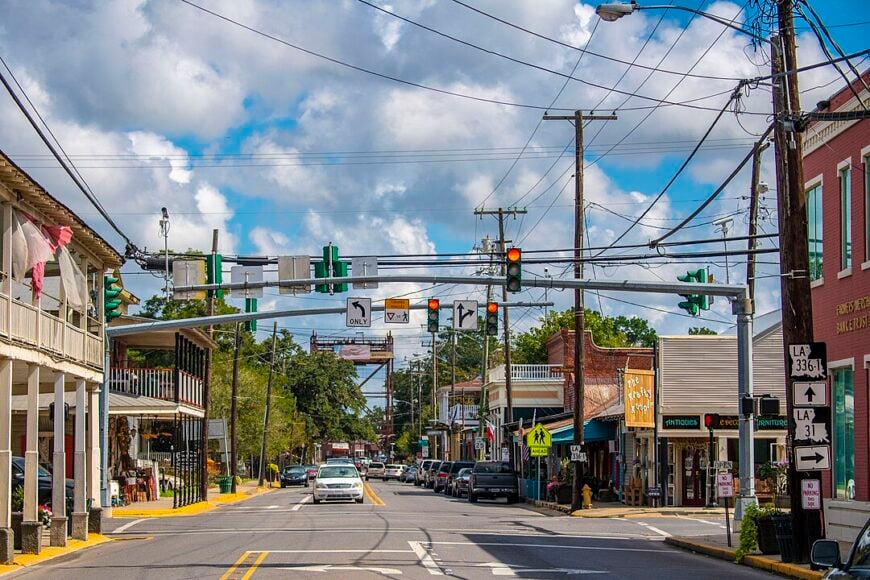
Breaux Bridge is the place where I first understood how central crawfish is to Cajun identity; even the streetlamps carry little metal critters instead of finials. Downtown hums with antique stores, art galleries, and cafés that pipe out zydeco music almost every morning, especially at the legendary Café des Amis dance brunch.
I like to time my visits with the first weekend in May, when the Crawfish Festival turns the whole town into a big, buttery boil with live bands on every corner. If you come in quieter months, hop on a swamp tour of nearby Lake Martin, where herons and gators share the cypress-studded water.
Don’t skip Lagniappe Antiques for vintage Cajun cookbooks, or the tiny but fascinating La Poussière ballroom that’s hosted dancers since 1955. Breaux Bridge wraps all these experiences into a single, irresistibly flavorful package.
The average price for a 3-4 bedroom home in Breaux Bridge ranges from $200,000 to $350,000, offering a blend of affordability and the chance to live near the bayou’s vibrant culture.
Where is Breaux Bridge?
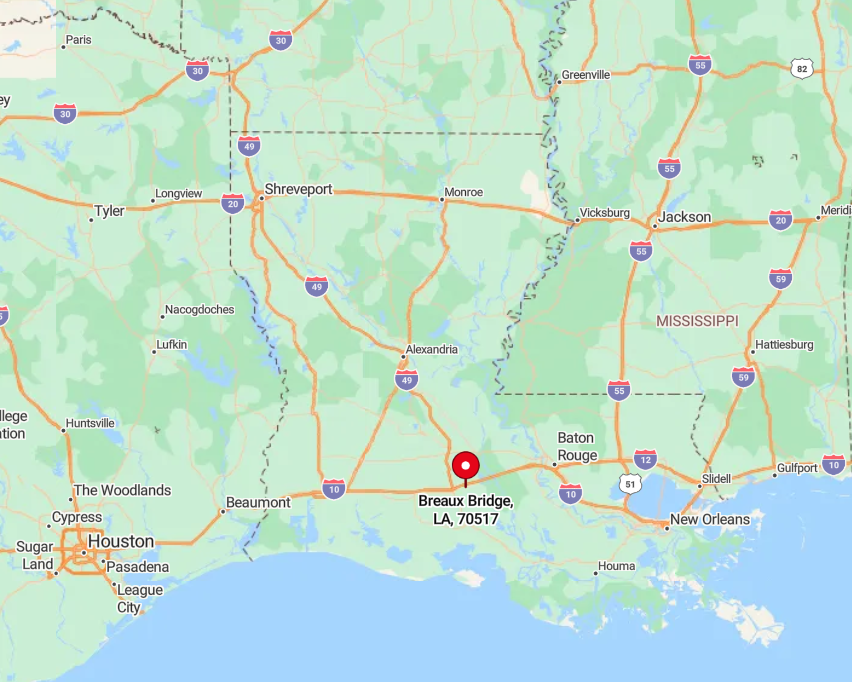
Breaux Bridge sits in St. Martin Parish, about ten minutes east of Lafayette on I-10, making it an easy detour for anyone crossing the state. What makes the geography special is Bayou Teche, a twisting waterway that once served as the region’s main highway and still defines the town’s rhythm.
You can arrive by car, of course, but I’ve also rented a kayak upstream and paddled into town, tying up at Parc des Ponts for lunch like boaters once did. However you get here, the low-slung bridges and endless crawfish ponds signal you’ve reached the heart of Cajun country.
16. St. Martinville: Uncover History in Louisiana’s ‘Little Paris’

St. Martinville feels like a living museum where French colonial architecture, Spanish moss, and Acadian legend mingle on every block. The town square centers on the elegant St. Martin de Tours Catholic Church, while the Bayou Teche Museum tells stories of early settlers in surprisingly interactive exhibits.
I always pause beneath the Evangeline Oak, said to honor Longfellow’s epic heroine and the real Acadian lovers who inspired her tale. On Friday nights, the community hosts “Rendez-vous des Cajuns,” a radio-broadcast dance that keeps accordion riffs echoing through the courthouse lawn.
Foodies should track down Le Petit Paris Café for a turtle-soup special you rarely see elsewhere. St. Martinville’s blend of romance and resilience makes history feel anything but dusty.
3-4 bedroom homes in St. Martinville are priced between $150,000 and $250,000, making it an affordable choice for those looking to experience the rich history of Louisiana’s bayou country.
Where is St. Martinville?
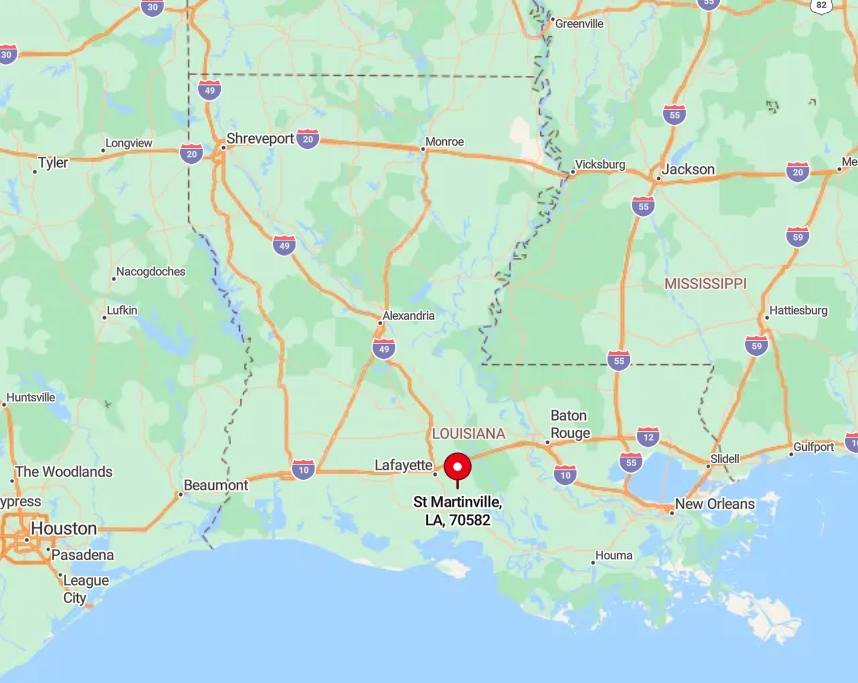
You’ll find St. Martinville roughly 15 miles south of Breaux Bridge along LA-31, hugging a gentle bend in Bayou Teche. The river’s oxbow curves give the town its intimate, almost European layout, earning it the nickname “Little Paris.”
Driving is simplest, but cyclists often follow the Teche–Vermilion Scenic Byway, a pleasant ride shaded by live oaks. Because the bayou is navigable, some travelers still arrive by small boat—one of the rare Louisiana towns where that’s a practical option.
15. Abbeville: Savor Tradition at the Giant Omelette Celebration

Abbeville might look sleepy most of the year, but every first weekend in November it cracks 5,000 eggs into a skillet the size of a kiddie pool for the Giant Omelette Celebration. The rest of the time, I love strolling Magdalen Square where Victorian storefronts hide boutiques full of pralines, old vinyl, and duck-hunting gear.
Tour the Sam Guarino Blacksmith Shop to watch hot iron shaped the same way it has been for a century. If the weather’s clear, drive a few miles south to Palmetto Island State Park for kayak trails lined with dwarf palmettos and chorus frogs.
For dinner, I can’t skip Shucks!, where the char-grilled oysters sparkle with lemon and butter. Abbeville proves small towns can host outsize traditions without losing their charm.
The average price for a 3-4 bedroom home in Abbeville ranges from $150,000 to $250,000, offering a cost-effective option for families looking to settle in this charming town with bayou views.
The average price for a 3-4 bedroom home in Abbeville ranges from $150,000 to $250,000, offering a cost-effective option for families looking to settle in this charming town with bayou views.
Where is Abbeville?
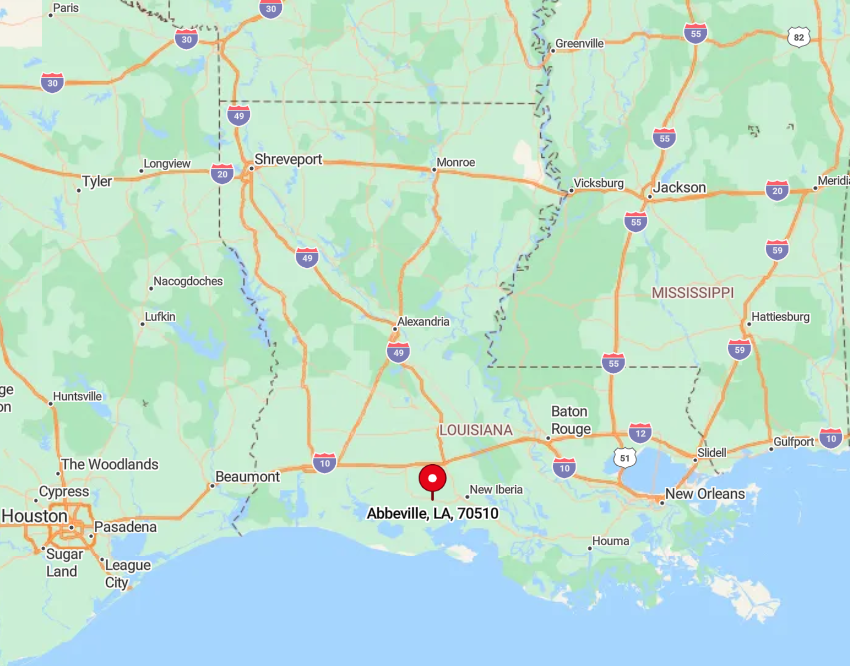
Positioned in Vermilion Parish, Abbeville lies about 20 miles south of Lafayette on LA-14, just north of the tidal marshes that lead to the Gulf. The town occupies a gentle rise above Vermilion River, historically safe from floods yet close enough for shrimp boats to dock.
Most visitors arrive by car, but I occasionally chart a scenic loop via LA-338 through sugar-cane fields—sweet, earthy air included. Its location on the cusp of prairie and marsh gives Abbeville easy access to both duck blinds and dancehalls.
14. Franklin: Walk Among Antebellum Oaks and Historic Homes
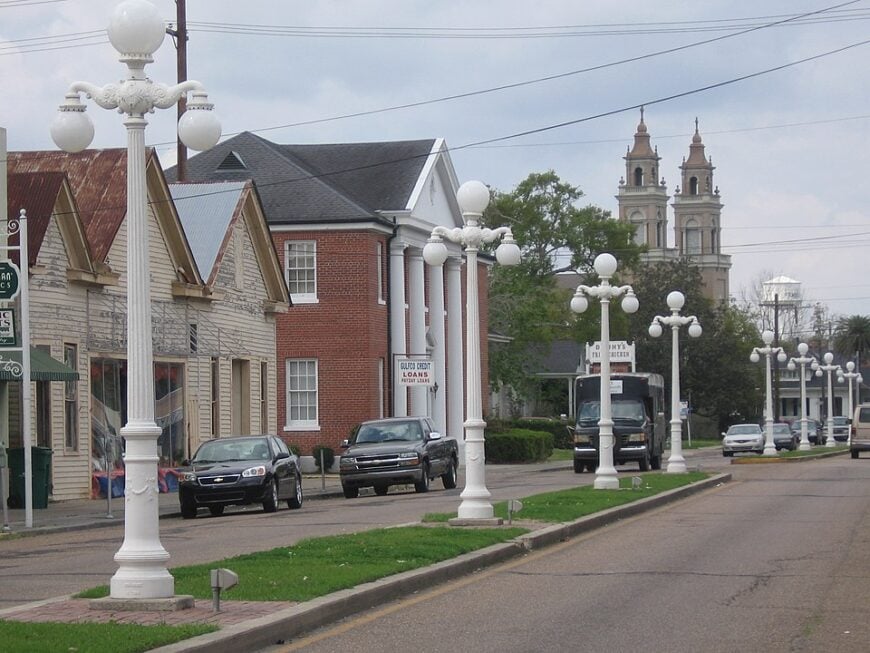
Pull into Franklin and the first thing you’ll notice is the mile-long avenue of live oaks arching over Main Street, framing dozens of Greek Revival and Italianate homes. I recommend a self-guided walking tour; many houses display small plaques with stories of sugar-baron fortunes and Civil War intrigue.
The Grevemberg House Museum lets you peek inside crystal-laden parlors, while nearby Shadows-on-the-Teche in New Iberia pairs nicely for a day of antebellum architecture. When I need nature, I follow the Bayou Teche Paddle Trail straight through downtown, past sunbathing turtles and the occasional tricolored heron.
Twice a year, Franklin throws a Harvest Moon Festival where local bands set up on historic porches—porch-hopping has never been so fun. Between its tree canopy and riverine setting, the town feels frozen in the most graceful kind of time warp.
3-4 bedroom homes in Franklin are priced between $150,000 and $250,000, providing an affordable base for those eager to explore the local culture and natural beauty of the bayous.
Where is Franklin?
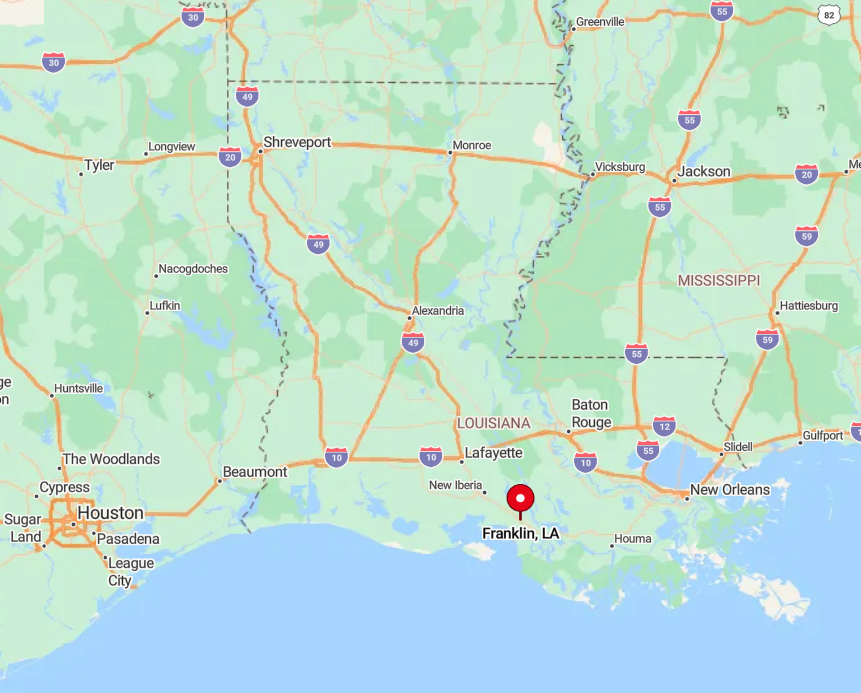
Franklin lies in St. Mary Parish, roughly halfway between Lafayette and Morgan City on US-90, hugging the sinuous Bayou Teche. The bayou’s natural levee created high ground, so the town escaped many of the floods that shaped the surrounding marshes.
Amtrak’s Sunset Limited stops nearby in New Iberia, making rail an under-the-radar option for visitors who prefer not to drive. Those arriving by boat can use the town’s public dock, an amenity surprisingly deluxe for a place this small.
13. Avery Island: Spice Up Your Journey at the Birthplace of Tabasco
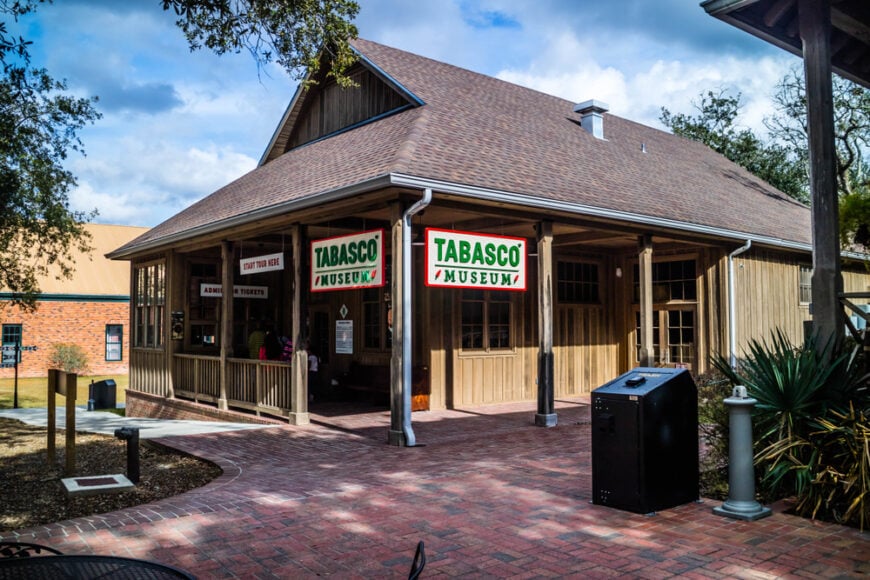
Avery Island isn’t really an island as most folks imagine—more a giant salt dome rising out of flat marsh, crowned with jungle-thick live oaks. The Tabasco Factory tour walks you past oak barrels of aging pepper mash, and the aroma alone will clear your sinuses.
My favorite spot is Jungle Gardens, a semi-tropical sanctuary laid out by Edward Avery McIlhenny, where snowy egrets nest on man-made “Bird City” rookery islands.
If you’re lucky, you’ll spot an albino nutria or the stone Buddha sculpted in 1100 AD that somehow ended up here. Pack a picnic spiced with limited-edition sauces sold only at the on-site country store. Few places mix nature and culinary legend as seamlessly as Avery Island.
The average price for a 3-4 bedroom home in Avery Island ranges from $300,000 to $500,000, offering an upscale option for those who appreciate the region’s unique combination of culture and nature.
Where is Avery Island?
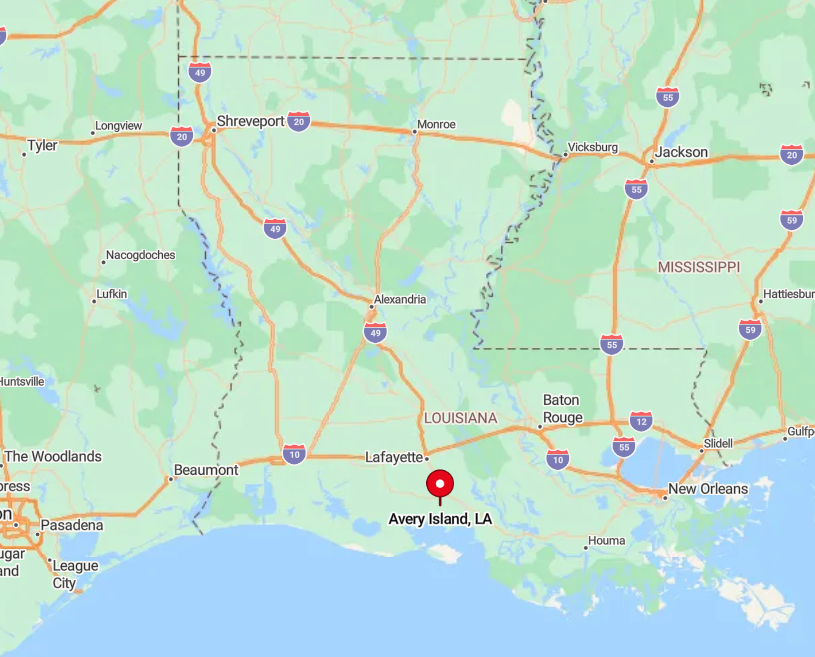
Located 20 minutes south of New Iberia off LA-329, Avery Island rises about 160 feet above the surrounding marsh, towering by coastal Louisiana standards. Its salt-dome geology gives it a firm foundation, making it one of the few local spots never to flood.
Visitors drive across a small toll bridge spanning Bayou Petite Anse, the only land route in. Because of private ownership, access is limited to daylight hours, so plan your trip accordingly.
12. Morgan City: Celebrate Heritage at the Shrimp and Petroleum Festival
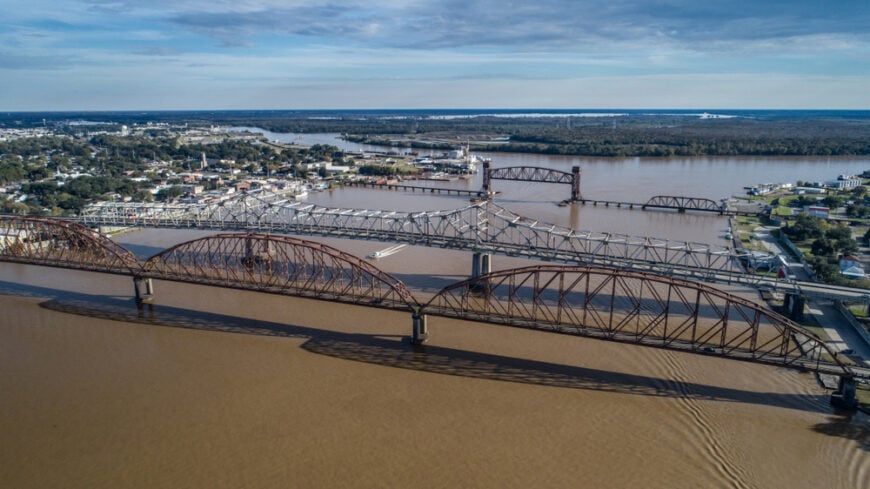
Morgan City straddles both sides of the Atchafalaya River, and that duality—water and industry—defines its soul. Every Labor Day weekend, the Shrimp and Petroleum Festival toasts the two forces that built the town with parades of shrimp boats decked in rigging lights.
I like popping into the International Petroleum Museum, where the decommissioned rig “Mr. Charlie” lets you roam catwalks high above the water. Anglers charter trips for speckled trout in the delta, while birders scan cypress snags for roseate spoonbills along Brownell Memorial Park’s boardwalk.
Downtown’s retro neon signs glow over cafés serving étouffée that rivals anything in Lafayette. Morgan City shows how industry and culture can dance together on the bayou stage.
3-4 bedroom homes in Morgan City are priced between $150,000 and $300,000, making it a great option for those interested in a scenic bayou lifestyle at an affordable price.
Where is Morgan City?
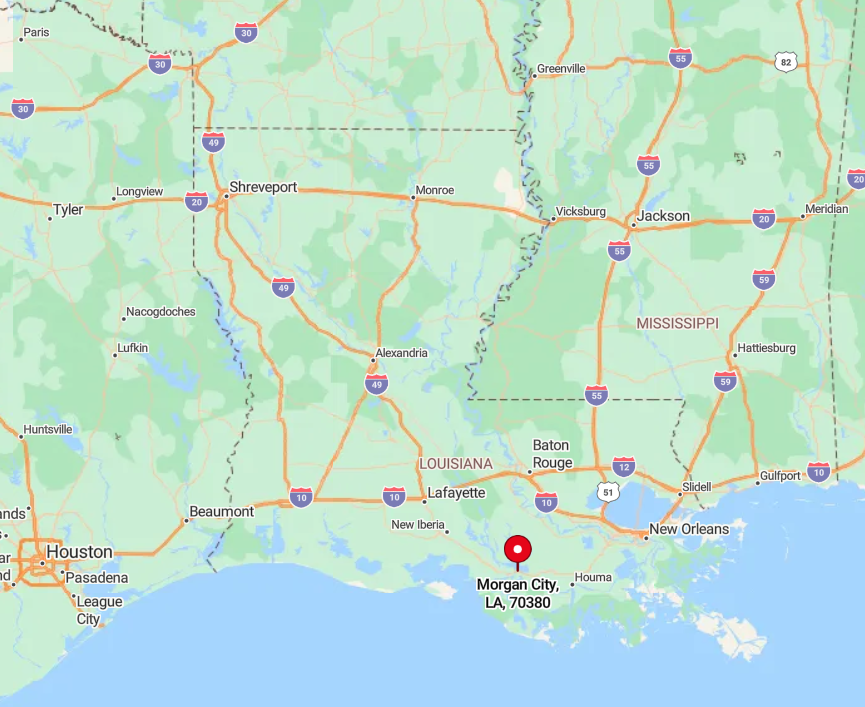
Perched at the eastern edge of St. Mary Parish, Morgan City sits where US-90 crosses the Atchafalaya, roughly 70 miles west of New Orleans. The river funnels Gulf tides right past the seawall, creating one of the busiest seafood ports in Louisiana.
Most travelers arrive by car, but the town’s municipal airport welcomes small planes—handy for offshore workers commuting to rigs. From here, LA-70 offers a scenic drive north through swamp forest toward Pierre Part and the heart of Cajun houseboat country.
11. Jeanerette: Discover Sweetness in ‘Sugar City’
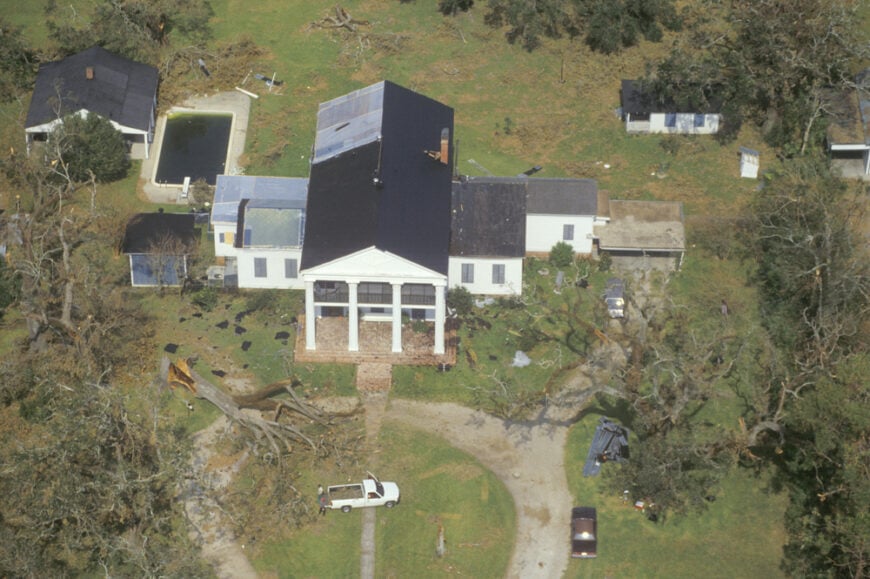
Jeanerette owes its nickname to the sugar mills that once perfumed the air with caramelized cane, and you can still see the rusted gears of the old mill rising above town.
The Jeanerette Museum, housed in a 19th-century general store, tells both sweet and bitter sides of cane history through artifacts like hand-forged machetes and rare Creole quilts. I often grab lunch at Boudreaux’s Café—try the cane-syrup sausage po’boy—and then paddle Bayou Teche, whose slow current mirrors life here.
The annual Gumbo Cook-off in October draws hidden-gem chefs who ladle from cast-iron pots the size of truck tires. Don’t leave without sampling locally made pecan candy, lighter and crispier than pralines up the road.
Jeanerette may be quiet, but its flavors linger. The average price for a 3-4 bedroom home in Jeanerette ranges from $150,000 to $250,000, providing a peaceful and affordable setting for those looking to immerse themselves in local bayou culture.
Where is Jeanerette?
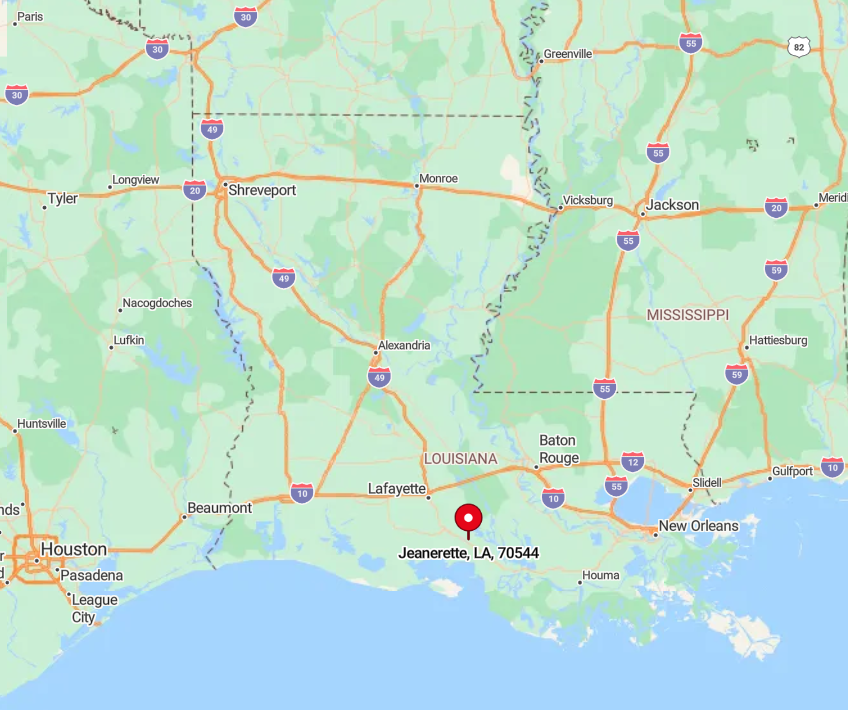
Jeanerette lies in Iberia Parish along LA-182, 25 miles southeast of Lafayette and directly on Bayou Teche. The town sits on a natural levee, so cane fields and swamp spread out like patchwork in every other direction.
Visitors usually drive, though I once caught the Amtrak stop in nearby New Iberia and biked the last stretch along backroads lined with cane. Because the bayou is narrow here, houseboats glide by almost at eye level with Main Street, giving newcomers an instant sense of place.
10. Thibodaux: Embrace Cajun Life Along Bayou Lafourche
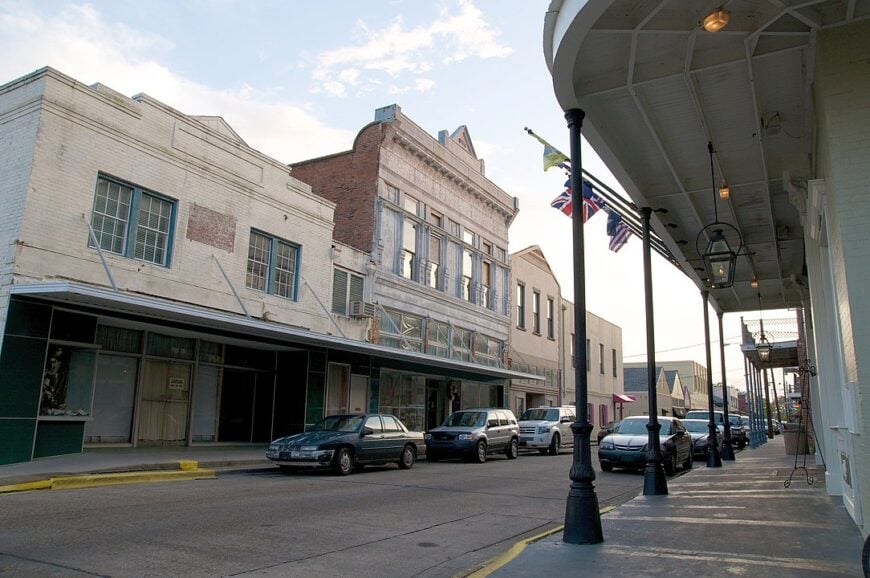
Thibodaux buzzes with university energy thanks to Nicholls State, yet it still feels like a bayou town where everyone knows your grandmother. Stop at the Wetlands Acadian Cultural Center for live accordion demos, then cross the street for a bowl of chicken-and-sausage gumbo at Fremin’s, housed in a century-old bank.
On Friday evenings, downtown’s “Live After 5” concerts spill fiddle tunes onto brick sidewalks. I’m always drawn to Laurel Valley Village, a few miles south, the largest surviving sugar-plantation worker community in the country, where wood cabins lean gracefully among rows of rusting kettles.
Bayou Lafourche itself is now a freshwater diversion, perfect for kayaking past bald-cypress knees and bright-painted houseboats. Thibodaux balances academic vigor with deep Cajun roots in a way that keeps me coming back.
3-4 bedroom homes in Thibodaux are priced between $200,000 and $350,000, offering a great option for those wanting to explore the town’s rich history and close proximity to the bayou.
Where is Thibodaux?
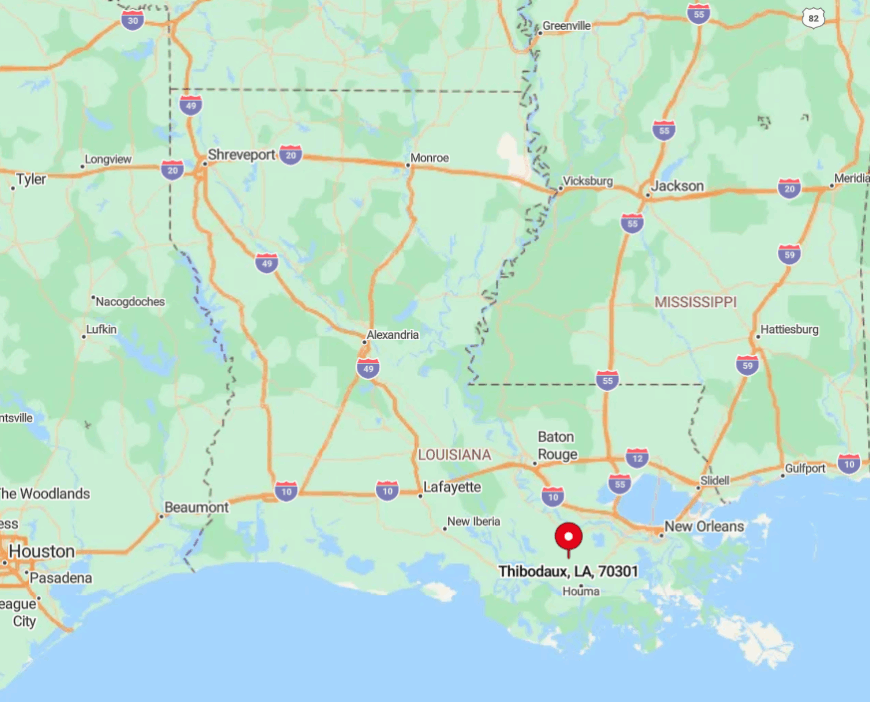
Thibodaux anchors Lafourche Parish along LA-1, about an hour west of New Orleans and 40 minutes southeast of Houma. The town hugs Bayou Lafourche, a 106-mile waterway once nicknamed “Longest Main Street in the World.”
Driving is easiest, but I’ve twice biked the new Bayou Lafourche Trail from Raceland, a flat ride shaded by pecan trees. Because the bayou now connects to the Mississippi River via pumping stations, you can technically paddle here all the way from Donaldsonville if you’re feeling adventurous.
9. Grand Isle: Escape to Louisiana’s Hidden Island Paradise
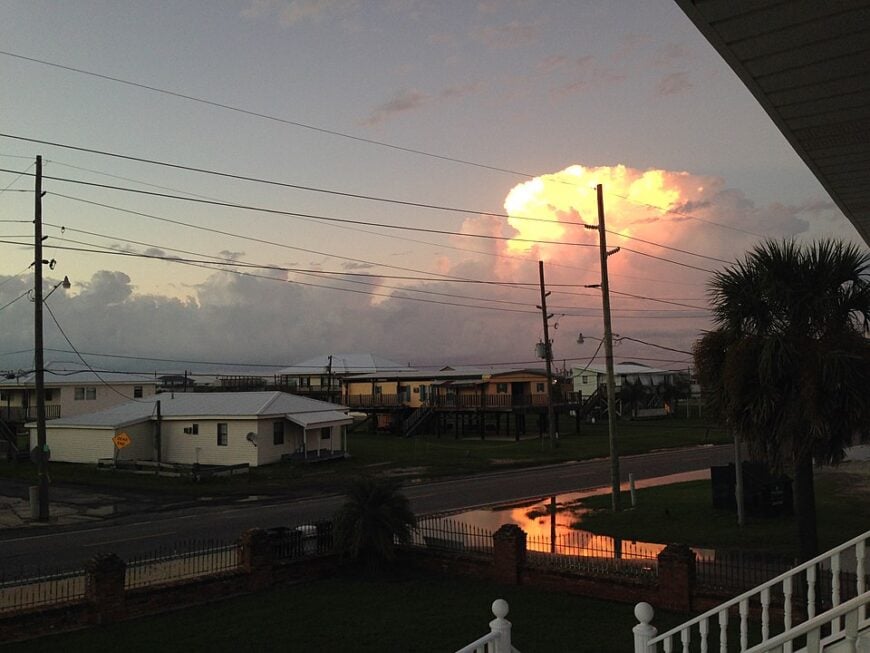
Grand Isle stands as Louisiana’s only inhabited barrier island, where pastel camps perch on stilts and brown pelicans patrol the surf. I come for sunrise fishing on Elmer’s Island, casting into the Gulf for speckled trout while dolphins breach just beyond the breakers.
Birders flock during spring migration when the island becomes a green oasis for warblers crossing from Yucatán; the annual Migratory Bird Festival offers guided walks through oak “chenier” ridges you’d never find on your own.
Hurricane history is palpable, yet so is resilience—locals rebuild camps with ingenious pulley systems that hoist furniture before storms. Late afternoons, I grab a frozen daiquiri at Starfish Restaurant and watch shrimp boats glide past the old schoolhouse pier.
Grand Isle feels like the edge of everything, in the best possible way. The average price for a 3-4 bedroom home in Grand Isle ranges from $300,000 to $600,000, offering a higher-end choice for those seeking a home near the bayou and the beautiful coastline.
Where is Grand Isle?
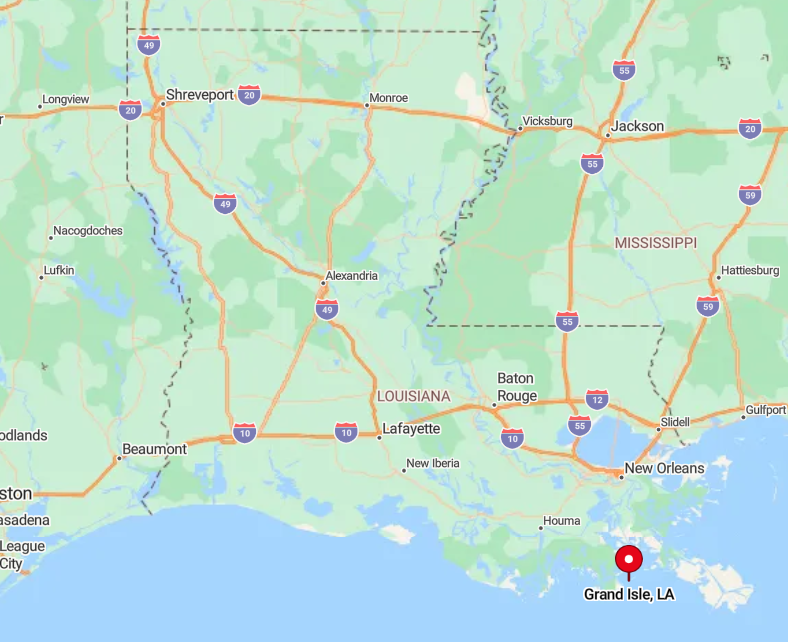
You’ll reach Grand Isle by driving LA-1 south until pavement quite literally runs out, about 50 miles beyond Cut Off and two hours from New Orleans. The highway hops across elevated bridges and causeways, revealing salt marsh to every horizon before finally touching the island’s slender crescent.
There’s no rail or commercial air service; the nearest airstrip is a small charter field in Galliano. Because it’s a barrier island, tides and weather dictate travel, so check road advisories before you go.
8. Abita Springs: Sip and Stroll in this Quaint Brewery Town
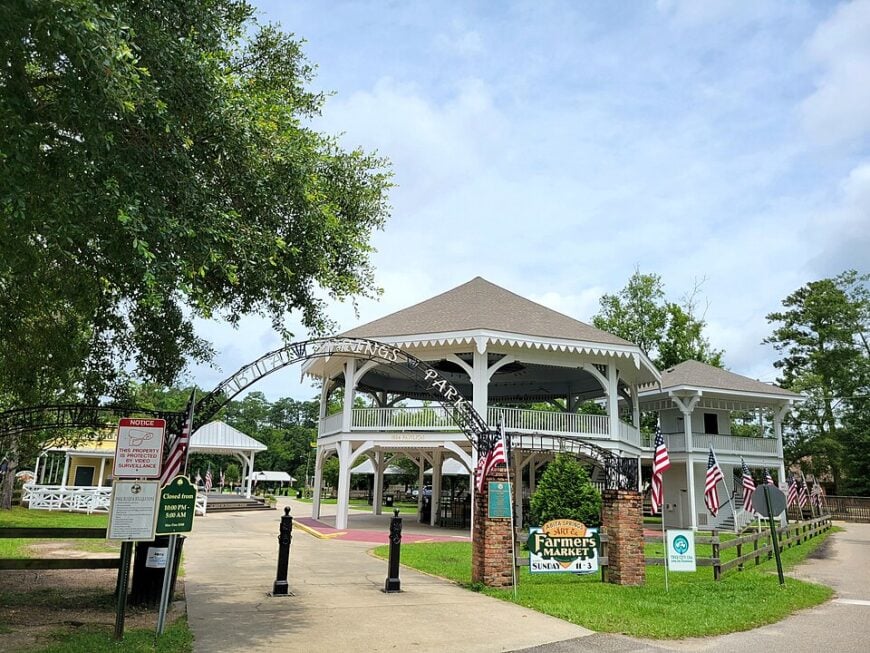
Abita Springs sits amid longleaf pines on the north shore of Lake Pontchartrain, famous for artisan beer brewed with pristine spring water. The Abita Brew Pub occupies the original 1900s brewery; I love pairing a Purple Haze with crawfish beignets while live blues drift from the porch.
Across the street, the Abita Mystery House dazzles kids and adults alike with welded-together alligator-motorcycle hybrids and a miniature Mardi Gras parade in perpetual motion.
Cyclists adore the 31-mile Tammany Trace rail-trail that runs right through town, shaded by hardwood canopies and dotted with yoga-practicing squirrels (okay, maybe just nimble ones).
On Sunday mornings, the farmers market sells wildflower honey, said to capture the flavor of the pine forest itself. Abita Springs proves that bayou culture can mingle with craft culture in downright refreshing ways.
3-4 bedroom homes in Abita Springs are priced between $250,000 and $450,000, providing a charming option for those looking to enjoy the area’s bayou culture and quaint community.
Where is Abita Springs?
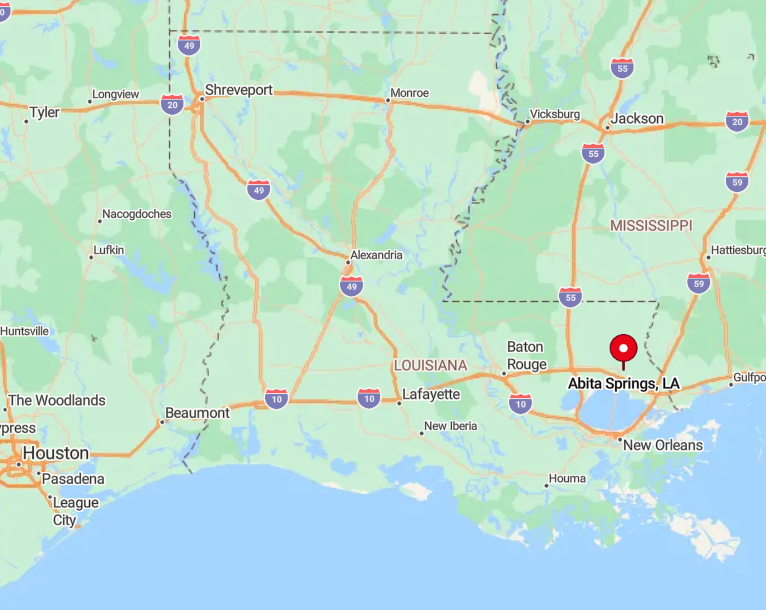
The town sits in St. Tammany Parish, six miles east of Covington and an hour’s drive north of New Orleans via the Causeway Bridge and LA-59. It perches on a slight rise above the floodplain, where artisanal wells tap the Southern Hills Aquifer for famously pure water.
Most folks arrive by car, but I often haul my bike on the Causeway, park in Mandeville, and cycle the last leg of the Tammany Trace into town. Because Abita is inland from major bayous, its culture mixes piney-woods serenity with south-Louisiana flavor.
7. Ponchatoula: Taste the Sweet Life in the Strawberry Capital
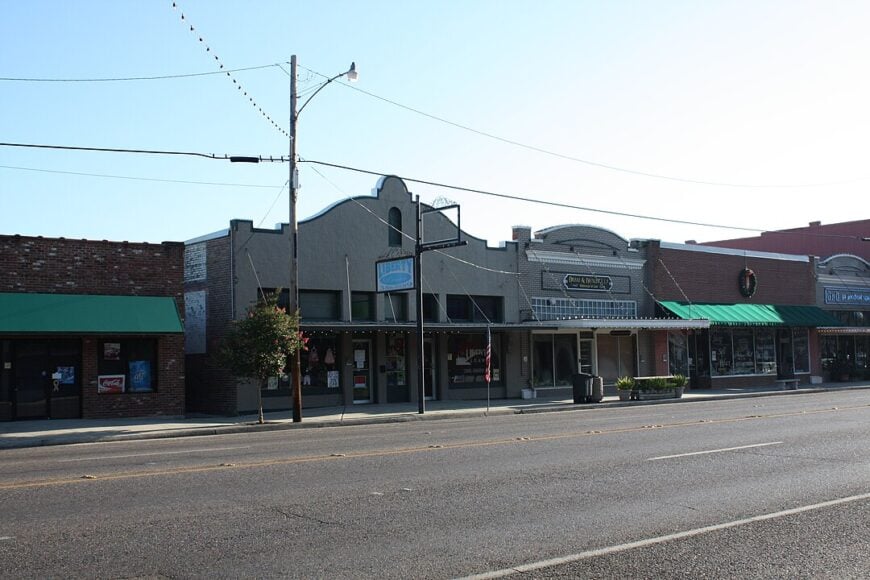
Every April, Ponchatoula’s Strawberry Festival paints the town red—literally—with berry banners, shortcake booths, and a parade where the queen rides a giant fruit float. When festivities end, I wander the historic district’s antique shops hunting for mid-century cypress furniture and vintage carnival glass.
Kids (and the young at heart) visit Old Hardhide, the live alligator mascot living in a pen next to City Hall—a quirky tradition dating back decades. Nearby Kliebert’s Turtle & Alligator Farm offers up-close swamp tours and sometimes lets visitors hold baby gators.
For a quieter slice of town life, grab a strawberry-brie sandwich at Paul’s Café and picnic under the gazebo at Memorial Park. Ponchatoula turns agricultural pride into a year-round invitation.
The average price for a 3-4 bedroom home in Ponchatoula ranges from $200,000 to $350,000, making it an affordable and desirable location for those seeking the charm of bayou living.
Where is Ponchatoula?

Ponchatoula sits in Tangipahoa Parish just off I-55 and I-12, making it a natural pit stop between New Orleans and Baton Rouge. The town hugs the Tangipahoa River’s higher banks, sparing it from the worst floods that affect nearby lowlands.
Amtrak’s City of New Orleans line stops in Hammond, five miles north, giving rail travelers easy access. Strawberry farms speckle the surrounding countryside, and roadside stands along LA-22 overflow with fresh berries every spring.
6. Westwego: Discover the Gateway to Louisiana’s Wetlands
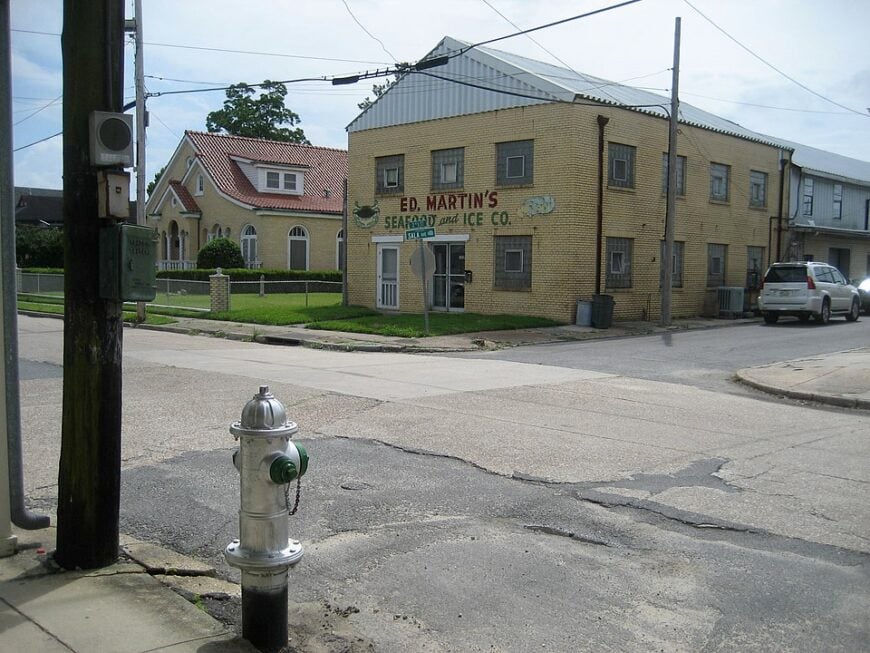
Westwego may be minutes from downtown New Orleans, yet it feels worlds apart with shrimp trawlers docking behind family homes and seafood markets hawking live blue crabs by the sack. My first stop is always the Westwego Seafood Market under the huge tin pavilion, where I buy fresh drum and have it fried on the spot.
Fishermen’s tales spill over into the town’s Barataria Museum, which captures life on the bayou through hurricane relics and folk art carved from driftwood. Neighboring Bayou Segnette State Park rents floating cabins—sleeping above the water while tree frogs sing is unbeatable.
Every March, the Family Gras parade takes a kid-friendly spin on Carnival without Bourbon Street’s frenzy. Westwego proves the wetlands begin well before you hit open marsh.
3-4 bedroom homes in Westwego are priced between $200,000 and $350,000, offering a great value for those looking to experience bayou life and local culture in a welcoming community.
Where is Westwego?
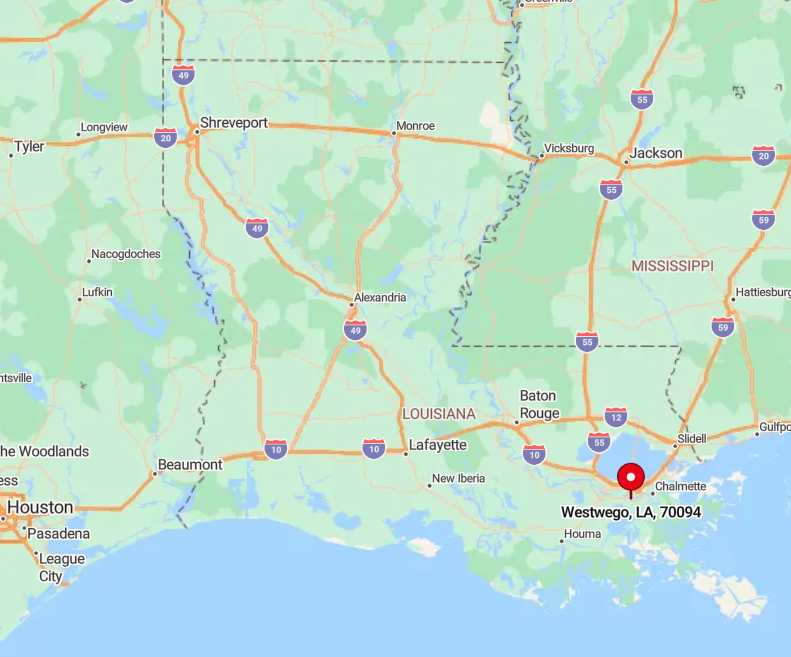
Located on the west bank of the Mississippi River in Jefferson Parish, Westwego hugs the Intracoastal Canal just off US-90, a ten-minute drive from downtown New Orleans. Its proximity to Bayou Segnette gives boaters instant access to freshwater marsh and, via locks, brackish Barataria Bay.
Visitors usually drive, though the Jefferson Transit E4 bus links it to New Orleans for those avoiding cars. Because railway spurs still serve local seafood processors, you might even catch a freight train rattling past shrimp boats—an industrial-bayou mash-up unique to this spot.
5. Delcambre: Dive into Tradition in This Shrimping Village
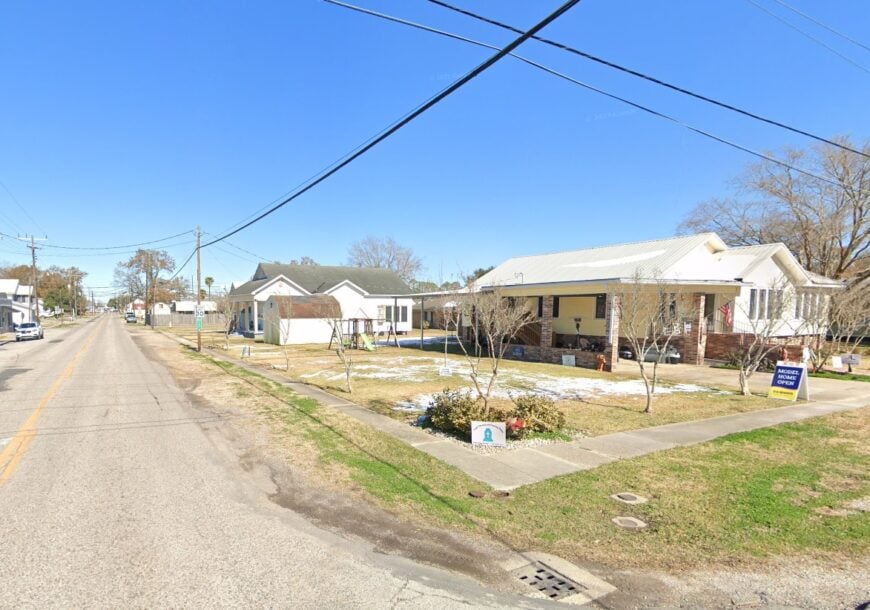
Delcambre smells like boiling shrimp during summer, and that’s a compliment—the aroma signals the fleet is in. The annual Shrimp Festival each August crowns a Shrimp Queen and hosts a “Blessing of the Fleet” flotilla bedecked with streamers and palm fronds.
At the Delcambre Seafood & Farmers Market, I’ve bought royal reds right off the boat along with homemade blackberry wine. Stop by Bayou Carlin Cove’s waterfront pavilion for live music most weekends and watch sunset paint the water pink.
If you want to experience life on deck, book a “Catch & Cook” charter where captains let you haul nets before frying your catch on a barrier island.
Delcambre marries hard work and hospitality like only a shrimping village can. The average price for a 3-4 bedroom home in Delcambre ranges from $150,000 to $250,000, providing an affordable and authentic bayou town experience for families.
Where is Delcambre?
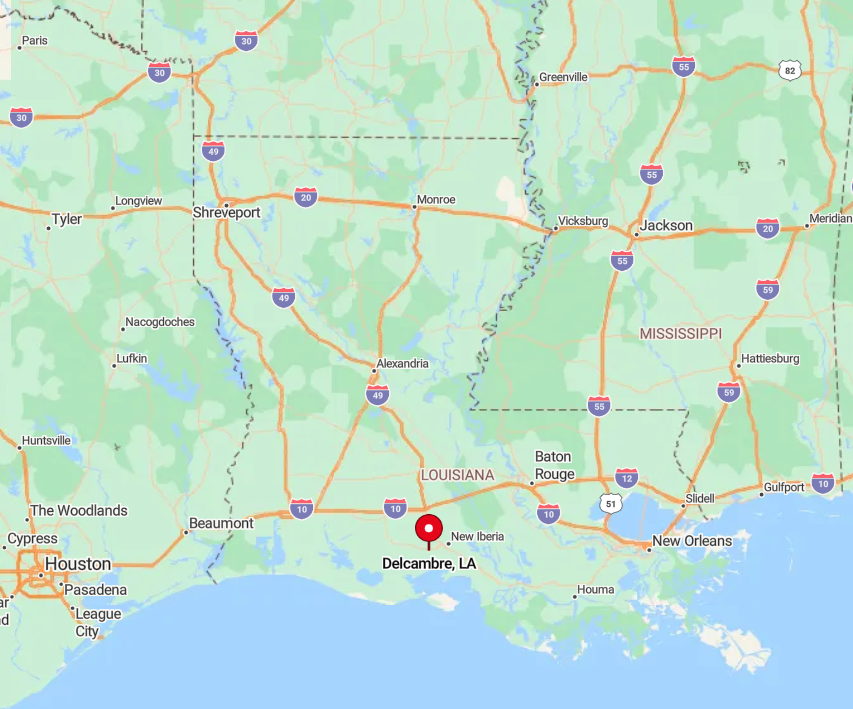
Straddling Iberia and Vermilion parishes, Delcambre sits where LA-14 meets the Delcambre Canal, a straight shot to Vermilion Bay and the Gulf beyond. The canal’s deepwater access makes the town a strategic harbor during storm evacuations for larger vessels.
Most visitors drive, but transient boat slips at Bayou Carlin Cove let cruisers tie up and walk into town—a rare amenity for the Intracoastal Waterway. The flat, reclaimed marshland surrounding Delcambre turns sunsets into widescreen spectacles of water and sky.
4. Jennings: Journey Through the Birthplace of Louisiana’s Oil Industry
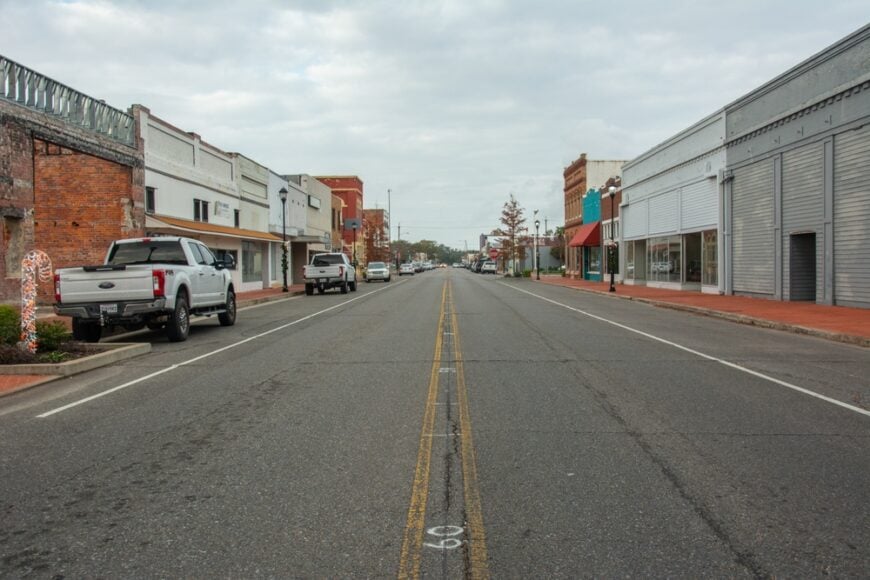
Jennings struck black gold in 1901, and the Zigler Museum chronicles that boom alongside a fine art collection that surprises first-timers with works by Rodin and Graham.
I make sure to tour the Tupper Museum’s replica of the first wooden oil derrick, then stroll downtown where Art Deco façades house café au lait shops and crawfish pie diners. Lacassine National Wildlife Refuge nearby offers drive-through marsh loops where pintail ducks and white-faced ibis crowd freshwater pools.
Every July, the town’s Trail Ride and Festival celebrates Creole cowboy culture with zydeco bands and horses prancing down Main Street. Jennings blends prairie heritage with petroleum lore in an unexpectedly graceful way.
3-4 bedroom homes in Jennings are priced between $150,000 and $250,000, offering a budget-friendly choice for those looking to live near the bayou and immerse themselves in local traditions.
Where is Jennings?

Jennings rests in Jefferson Davis Parish along I-10, almost exactly halfway between Lake Charles and Lafayette, making it an easy side trip for cross-state travelers. The town sits on what locals call the “Grand Marais,” a slightly elevated prairie that once supported endless rice fields.
Amtrak service stops right downtown, one of the few prairie towns with direct rail access. Because of its central location, Jennings often serves as a hub for exploring both coastal marshes to the south and pine forests to the north.
3. Patterson: Soar Through Aviation History Amidst the Bayous
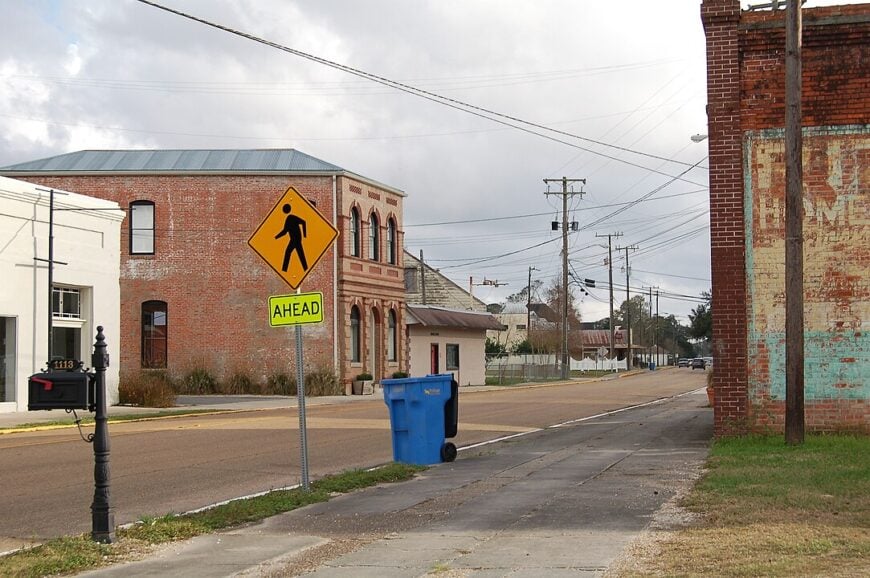
Patterson surprises visitors with the Wedell-Williams Aviation & Cypress Sawmill Museum, celebrating both daring racers of the 1930s and the lumber barons who logged local swamps.
The Wedell-Williams planes once set world speed records, and seeing them suspended above polished cypress floors brings the past to life. I like to rent a houseboat on Bayou Teche here, drifting under star-soaked skies while barred owls call from the bank.
Golfers can tee off at Atchafalaya Golf Course, where water hazards are actual bayous crawling with turtles. Every fall, the Cypress Sawmill Festival pairs lumberjack competitions with craft fairs that smell of fresh-cut pine.
Patterson proves even tiny towns can hit sky-high notes. The average price for a 3-4 bedroom home in Patterson ranges from $150,000 to $250,000, offering an affordable living option for families eager to experience bayou culture.
Where is Patterson?
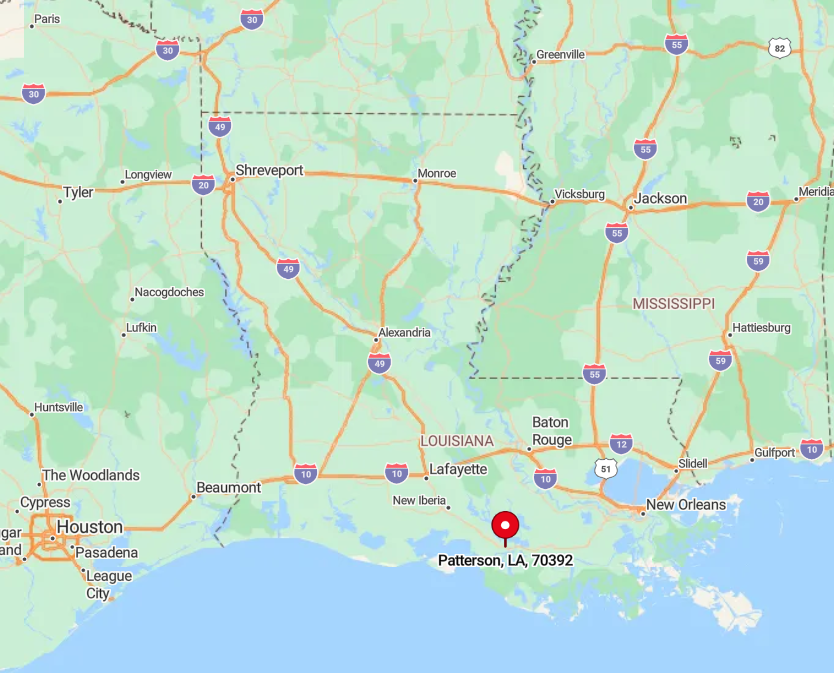
Situated in St. Mary Parish off US-90, Patterson hugs the Lower Atchafalaya River, granting quick boat access to the Gulf’s edge. The landscape is a checkerboard of swamp and man-made canals, a testament to both logging and oil exploration.
Most visitors arrive by car, though the town’s small airport, Harry P. Williams Memorial, nods to its aviation legacy. A scenic detour along LA-182 lets you follow historic Bayou Teche all the way from New Iberia, weaving past sugar mills and moss-draped oaks.
2. Eunice: Feel the Rhythm in the Heart of Cajun Music Country
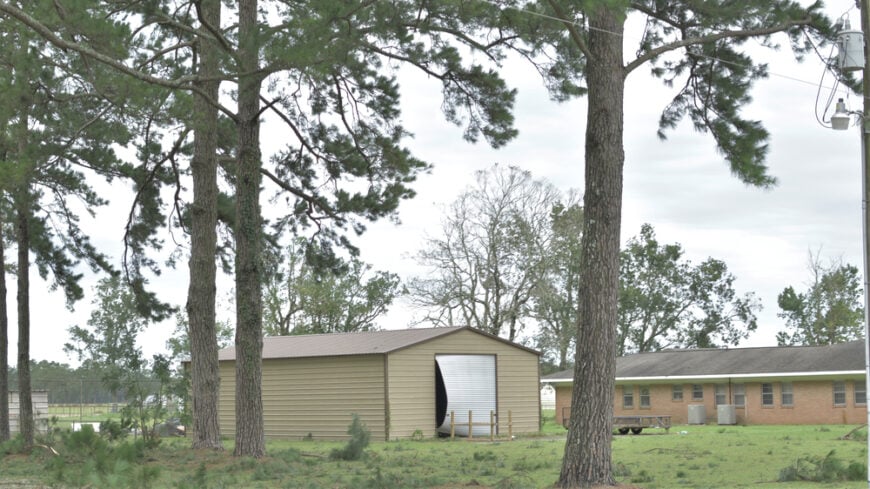
Drive into Eunice on a Saturday night and you’ll hear fiddles and accordions spilling from the Liberty Theater’s “Rendez-vous des Cajuns,” a live radio show that’s Louisiana’s answer to the Grand Ole Opry.
I always arrive early to tour the Cajun Music Hall of Fame next door, where stage-worn accordions bear the sweat of legends like Iry LeJeune. Nearby Savoy Music Center hosts Saturday-morning jam sessions where travelers can borrow a triangle and join in—it’s as welcoming as it is raucous.
Stop at Nick’s for boudin stuffed with pepper-jack cheese before driving south to Lacassine Prairie for a sunset that turns rice fields copper. The Courir de Mardi Gras here involves masked riders chasing chickens for the gumbo pot, a spectacle equal parts comedy and anthropology.
Eunice is where Cajun music lives, breathes, and two-steps late into the night. 3-4 bedroom homes in Eunice are priced between $150,000 and $250,000, providing a great value for those seeking a home in the heart of Louisiana’s bayou country.
Where is Eunice?
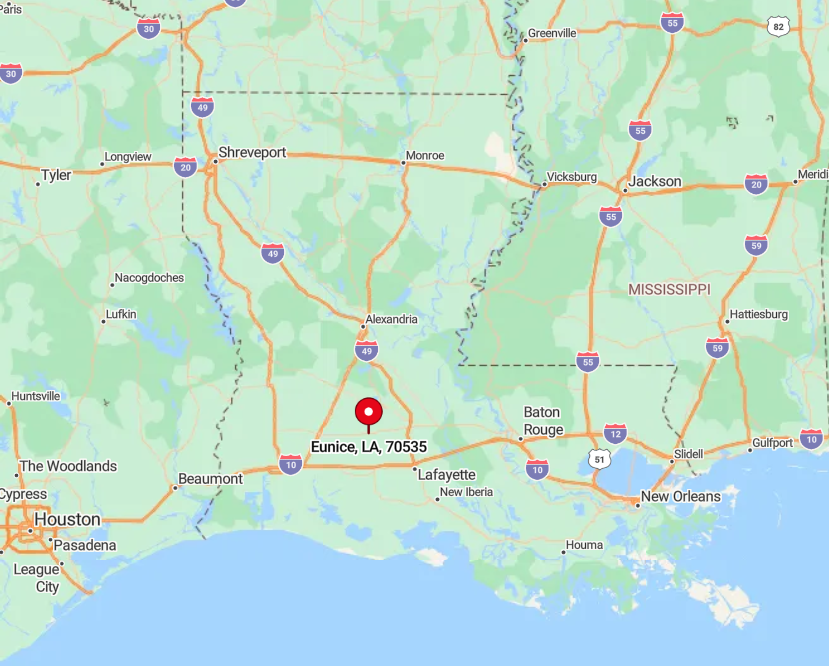
Eunice straddles St. Landry and Acadia parishes along LA-13, 45 miles northwest of Lafayette amid rolling prairies once roamed by bison. The town sits on slightly higher ground, making it a natural gathering spot for settlers and later for dancehall culture.
Driving remains easiest, but a Greyhound stop and a small general-aviation airport offer alternatives. Because rice fields surround the area, migrating snow geese create winter blizzards of white—an unexpected geographic bonus for birders.
1. Lafitte: Unearth Pirate Legends in a Bayou Setting
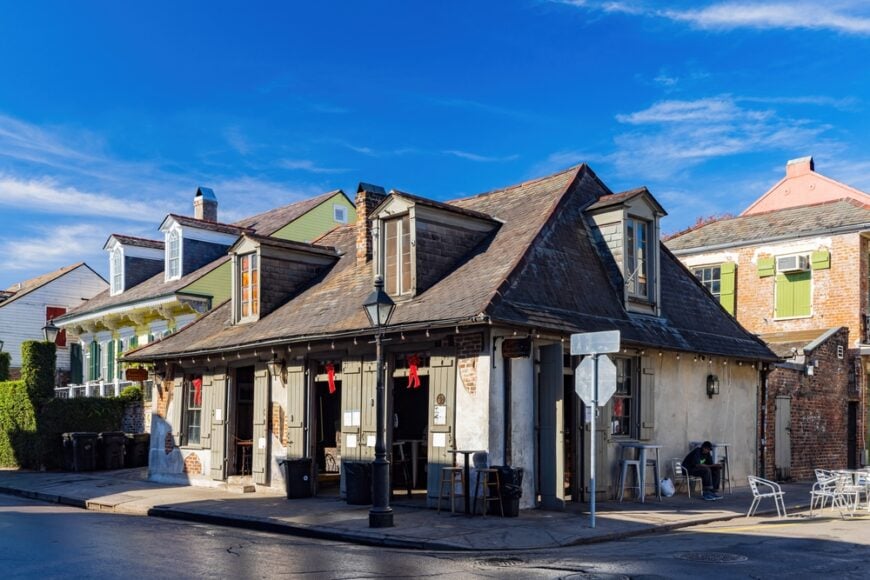
Lafitte carries the name of the famed pirate Jean Lafitte, and stories of buried treasure still animate campfire conversations along Bayou Barataria.
The town’s Lafitte Barataria Museum pairs pirate lore with exhibits on wetland ecology, culminating in a boardwalk that ends in a cypress swamp alive with iridescent dragonflies.
I love taking the Creole Queen paddlewheeler from New Orleans down to Jean Lafitte National Historical Park, then continuing by car to the town’s kayak launch for sunset paddles among rose-colored ibis.
Seafood shacks like Voleo’s serve shrimp straight from boats tied just feet away, proving freshness doesn’t need fancy credentials. Each October, the Jean Lafitte Seafood Festival fills the air with zydeco rhythms and the scent of garlic butter crab claws.
Lafitte melds myth and marsh so seamlessly that every visit feels like stepping into a living legend. The average price for a 3-4 bedroom home in Lafitte ranges from $200,000 to $400,000, offering a scenic and historic location for those looking to explore the bayou and its unique culture.
Where is Lafitte?
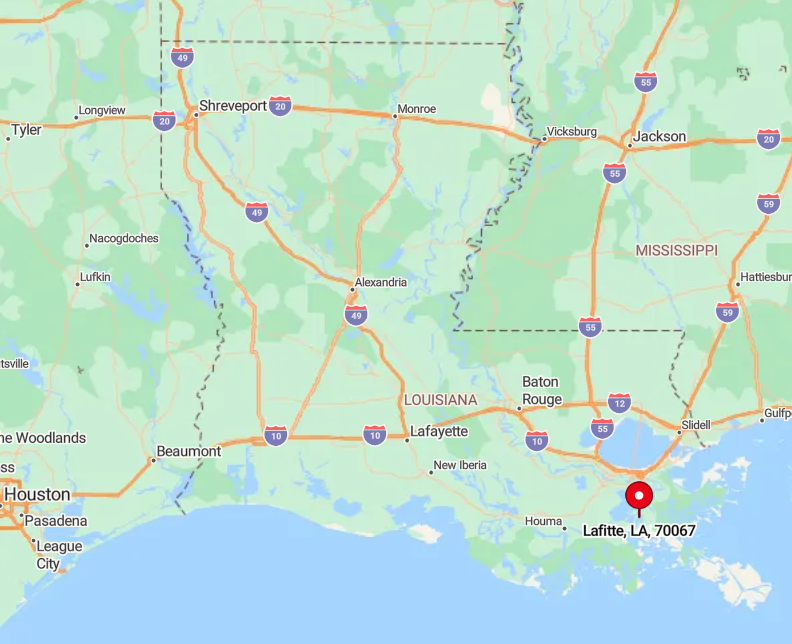
Lafitte lies 25 miles south of New Orleans in Jefferson Parish, accessible via LA-45 as it snakes through tall marsh grass toward Barataria Bay. The town sits barely above sea level on natural ridges flanking Bayou Barataria, so water is a constant companion.
Most visitors drive, though adventurous paddlers can follow the Barataria Waterway Trail from Crown Point, a winding 10-mile route through hidden canals. Because of its proximity to Gulf passes, Lafitte serves as both a cultural outpost and a literal gateway to open water, making geography and legend inseparable.

